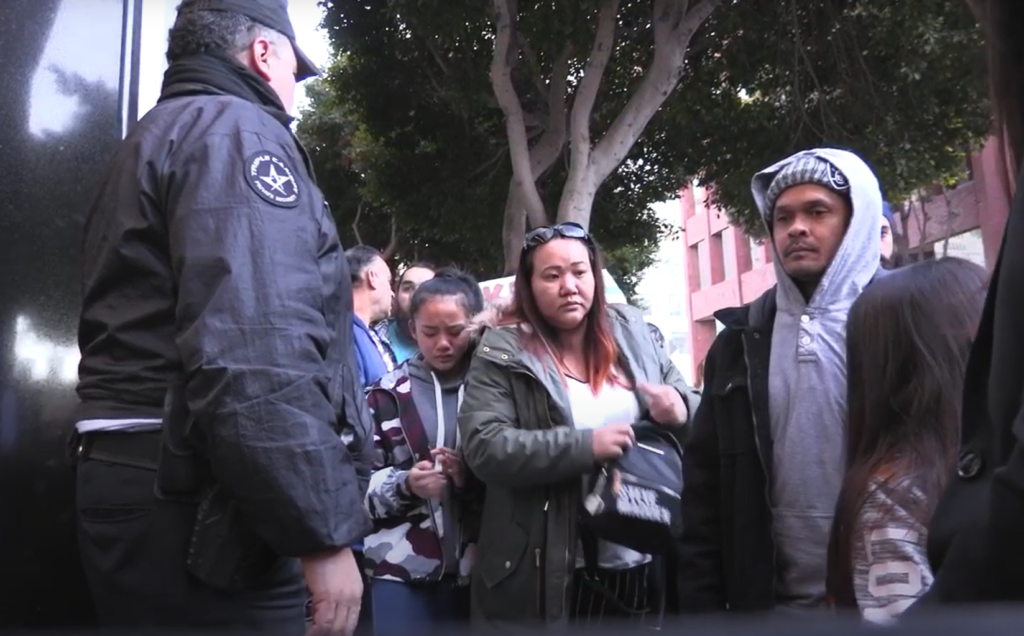By Emma Grover
My phone call with Ryan Samn opened with the busy sounds of clattering kitchenware ringing in the background.
“Sorry, I’m making dinner with my family right now,” He quickly explained. I myself was hidden in the back room of the tutoring center I work at on Thursday nights. The center was quiet, most of the students having left to return home for their own family dinners, and so I welcomed the familiar sounds of pots and pans, of running water.
After meeting one another, Ryan shared that he is the project coordinator for ARTogether’s, “Cambodian Voices in the Bay”, a three-part multimedia exhibition centered around the Cambodian community in the Bay Area. At first, he was reluctant to join the project since he worked full time for Skyline College. Additionally, the project itself had started before the pandemic, and it would be challenging to pick up where others had left off. But when ARTogether shared that they were looking for someone connected to the Cambodian community, Ryan decided to accept the role of project coordinator.
One of the first things that stood out to him was the exhibition’s original name, “Killing Fields to Sanctuary.” He immediately found it problematic, and was determined to change it.
He told me, “‘Cambodian Voices in the Bay’ is the who, what, and where, to answer your question. The who: Cambodian people, the what: their voices, and the where: in the Bay Area. The name is not focused on a history of killing or murder, but about Cambodian people and where they are now. It is more welcoming.”
Ryan then broke down the project for me. The exhibition is made up of three parts: an oral history section, a documentary, and an interactive website.
The oral history portion interweaves the stories of five Cambodian people of various backgrounds: RJ, a rapper from Oakland, Ratha, who is the director of Rajana Threads Khmer clothing brand based in San Francisco, Bochan, a singer from Oakland, and two Oakland based social justice advocates, Nya and Rhumannee. Ryan’s predecessor, Hector Murillo, conducted the interviews before the pandemic occurred and stored the audio files with ARTogether in hopes of creating a gallery event in which people could listen to the interview clips through headphones. Additionally, ARTogether’s talented photographers Aman Gupta and Sarah Mcclean took photos of the interviewees to be displayed alongside the audio clips. However, due to the pandemic, the idea of an in-person event was transformed into an online one. The oral history section will now be made available through the project’s interactive website.

The documentary portion follows the tribulations of Rouen Pich and his wife Kanley Souet, and their fight against Rouen’s deportation back to Cambodia. Due to a crime Rouen committed in his youth, ICE threatened to deport him despite his refugee status. The film captures Roeun and Kanley’s fight against the threat of deportation, with their community rallying behind them.
However, there was no shortage of challenges with the assembly of the documentary. Ryan explained, “When I first received the film, none of the footage had been edited!” ARTogether then hired Brandon Soun, who is the current editor of the film, and who is working diligently to complete the project. The documentary’s conclusion is scheduled to be shot during the month of June.
There were also some challenges with the interactive website as well. Ryan shared with me that when the website was first created it looked good but he couldn’t help but feel frustrated.
“It read like a book report on Cambodia,” he explained, “So I suggested, why don’t we do something that has never been done before. Instead of having a section about religion in Cambodia, which is already a very complex topic, let’s change it to an index of all the Buddhist temples that are active in the Bay Area. Instead of having a section on food, let’s index all of the Cambodian restaurants that are still open in the Bay. You know, nowadays, when you Google, ‘Cambodian food in the Bay’, due to algorithms you’ll get a few Cambodian restaurants and then like five Thai restaurants or Vietnamese Pho restaurants. Again, this kind of thing has never been done before!”
While I learned so many things during my conversation with Ryan Samn, one thing that will sit with me for quite some time is how relentless the art-making process can be. And yet, it is the decision to not give up that ultimately reaches people. Even when encountering challenge after challenge, Ryan was determined to stay true to his vision even if it entailed more work. That determination and care stays with me, and I am sure it will with many others when “Cambodian Voices in the Bay” is shared with the public.
Ryan would like to thank the ARTogether team for being extremely open and respectful throughout the process of creating this exhibition. Looking ahead, his hope is that in September, ARTogether will hold an in-person ceremony. He envisions an event where Cambodian monks, elders, community members, and families can join together in celebration and discussion.
“Cambodian Voices in the Bay” is made possible by the funding from California Humanities and The Center for Empowering Refugees and Immigrants.


